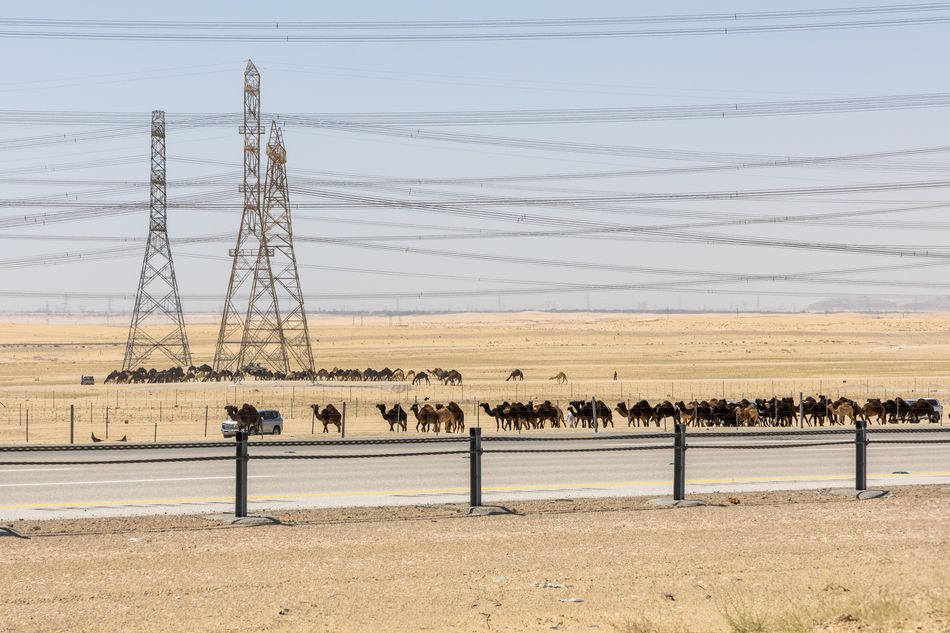Chinese lenders are recalibrating their approach to the Belt and Road Initiative, strategically deepening their footprint in the Middle East while shifting from traditional infrastructure lending towards a more risk-aware and commercially driven approach.
Once focused on building roads and ports in developing economies across Asia and Africa, Chinese banks are now at the forefront of lending to creditworthy Middle Eastern borrowers, prioritising financial sustainability and strategic sectors over purely political objectives.
“The era of blank-cheque financing for BRI-related mega projects is over," said a Hong Kong-based senior loan banker at a Chinese bank. “BRI lending is shifting away from purely policy-driven models towards more market-oriented activity with stricter credit filters. The Middle East, with its strong economic fundamentals and relative stability, offers a safer yet strategically valuable region for deploying our capital while still advancing China’s broader connectivity objectives.”
Earlier this month, 15 Chinese banks committed US$3.25bn, or nearly 65% of the deal size, to a US$5bn dual-tranche loan for sovereign wealth fund Abu Dhabi Developmental Holding. Seven of those banks were mandated lead arrangers and bookrunners, taking US$2.11bn combined.
LNG shipping company Qatar Gas Transport, commonly known as Nakilat, closed a US$1.33bn five-year loan with seven Chinese banks committing US$535m, or 40% of the final size. Five of those banks joined as MLABs with US$450m combined.
In September, state-owned Saudi Electricity raised a US$1bn five-year loan with seven Chinese banks committing US$312.75m, or 31% of the final size.
Counting financings where allocations are available, Chinese banks have lent 28% of the funds in deals this year for Middle Eastern borrowers, up from 19% last year, according to LLPC data.
The Middle East was the largest recipient of BRI investments in 2024, receiving US$39bn, double that of 2023, according to the China BRI Investment Report 2024. Saudi Arabia topped the list with US$18.9bn, followed by Iraq with US$9bn and the UAE with US$3.1bn.
Green focus
While China's BRI oil and gas investments reached a record US$24.3bn in 2024, representing 62% of its overseas energy engagement – including China National Chemical Engineering’s US$8bn investment in a refinery in Iraq – the year also marked a transition to green and renewable energy. Investments in solar, wind and waste-to-energy projects surged to US$11.8bn, a 60% increase that made 2024 the initiative’s “greenest” year since the BRI’s launch in 2013.
Total Chinese construction contracts and investments in BRI members totalled US$124bn across 176 deals in the first six months of the year, already passing the US$122bn in all of 2024, according to a study by the Green Finance & Development Center in Beijing.
“For us, Middle Eastern borrowers combine strong credit with strategic importance – Saudi Arabia, the UAE and Qatar not only anchor China’s energy security, but also offer safer and profitable opportunities,” said a second Hong Kong-based loan banker at a Chinese lender.
“Sector-wise, there is a clear strategic preference for us to finance renewable energy and digital infrastructure projects over traditional infrastructure projects, which also aligns with the Gulf’s push to diversify away from oil into technology and clean energy,” he said.
Debt distress
The strategic pivot coincides with growing debt concerns among some BRI participants. Many early BRI borrowers, particularly in South Asia and Africa, are facing debt distress and substantial repayment obligations. Research from Australia's Lowy Institute indicates that approximately 75 of the world's poorest countries will make record-high debt repayments totalling US$22bn to China in 2025, reflecting peak lending activity between 2012 and 2018.
“Although China has engaged in debt renegotiations and maturity extensions for some distressed borrowers, such as Pakistan and Sri Lanka, rising global interest rates are driving up debt servicing costs, while political instability – including elections and protests – may push more economies into financial stress,” said a China-based loan banker.
Earlier this month, Afghanistan and Pakistan traded fire, marking one of the deadliest border clashes since the withdrawal of US forces from Afghanistan in 2021. The escalating tensions cast a shadow over China's strategic efforts to extend the China-Pakistan Economic Corridor, a flagship BRI project, into Afghanistan.
While policy banks such as the China Development Bank and Export-Import Bank of China remain the backbone for some mega projects as the BRI continues into its second decade, other Chinese state-owned and commercial banks are playing a growing role.
“We have learnt from the first decade of BRI lending,” said a second China-based loan banker. “We now implement stricter due diligence processes, with a heightened focus on sovereign credit ratings and repayment capacities of borrowers before extending loans.”
Banks increasingly favour smaller and carefully vetted projects with greater emphasis on financial viability and solid yields, aligning with China’s “small and beautiful” BRI shift in November 2021 that intended to replace debt-laden mega projects with more sustainable investments.
“There is also strong momentum towards involving private capital through public-private partnerships, which helps dilute sovereign debt exposure and shares the risks,” the second China-based loan banker said.






